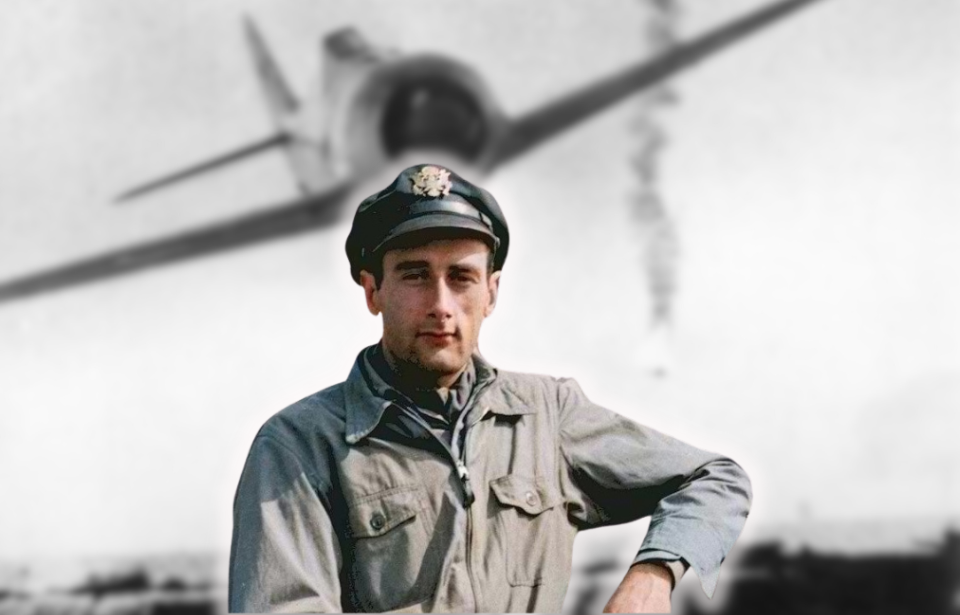Joining the US Army Air Forces (USAAF)
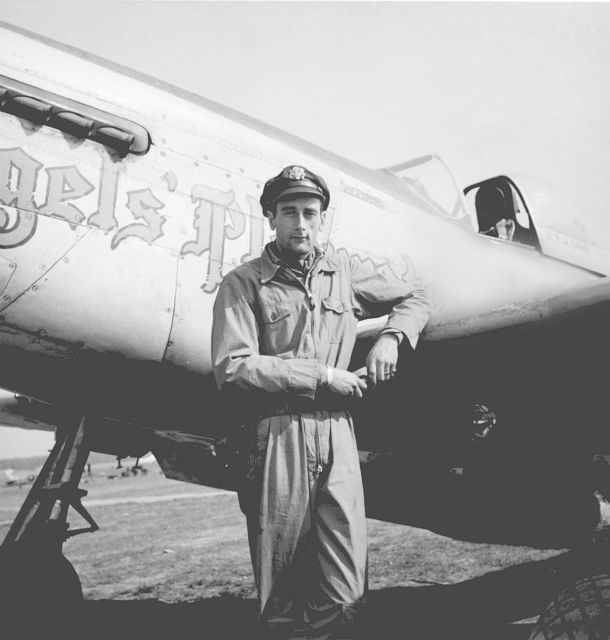
Born in New York, Bruce Carr was just 15 years old when the Second World War broke out in 1939. Motivated by the events of that year, the teenager made a firm commitment to master the art of flying.
Jump ahead three years to September 3, 1942, and Carr, now 18, enthusiastically enlisted in the US Army Air Forces. Using his prior aviation experience, he joined the service’s accelerated training program, ascending into the skies aboard the Curtiss P-40 Warhawk.
On August 30, 1943, Carr attained the rank of flight officer, amassing an impressive 240 flight hours. His expertise extended to specialized training, enabling him to pilot both the North American P-51 Mustang and A-36 Apache. The former, in particular, held a special place in his heart, earning the endearing nickname, Angels’ Playmate.
He didn’t get credit for his first aerial victory
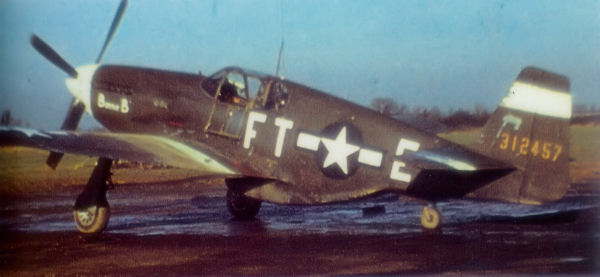
In 1944, Carr was stationed in England with the 380th Fighter Squadron, 363rd Fighter Group, Ninth Air Force at RAF Rivenhall. His first major combat achievement came after an intense chase and exchange of gunfire, leading to the downing of a Messerschmitt Bf 109. However, this victory wasn’t officially recognized because it didn’t meet the strict criteria for a confirmed kill.
His bold and assertive flying style made him stand out as a unique pilot, though his superiors often criticized him for being “overaggressive.” As a result, he was reassigned to the 353rd Squadron, 354th Fighter Group, at RAF Lashenden.
A trip to Germany
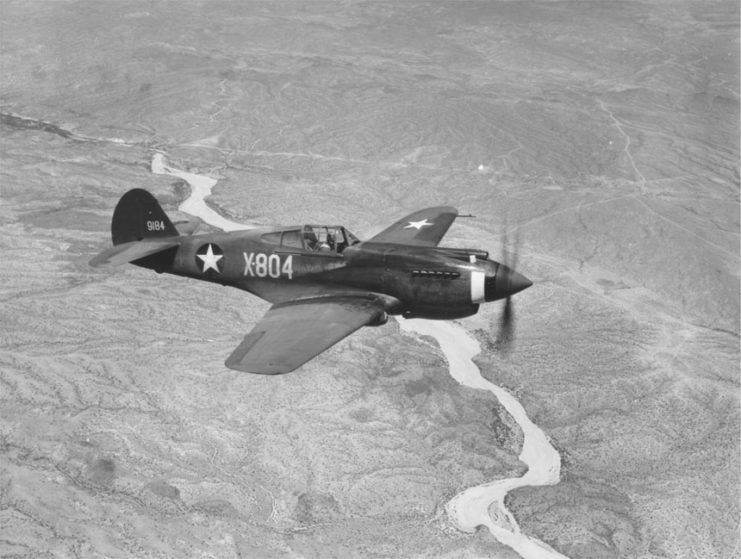
On November 2, 1944, Bruce Carr lost his beloved P-51D during a dangerous mission. While leading a low-level attack on a German airfield in Czechoslovakia, his plane malfunctioned, and he was forced to eject far behind enemy lines.
Carr beat the odds by staying hidden for several days, relying on his quick thinking and determination to avoid being caught.
But after going without food or water for too long, he grew so weak that he thought about surrendering. Knowing there was a German airfield nearby, he decided to head there and give himself up.
When he got there, he noticed a German crew getting a Focke-Wulf Fw 190 ready for takeoff. That changed everything—once the crew stepped away, Carr saw his chance and crept onto the plane instead.
Traveling home
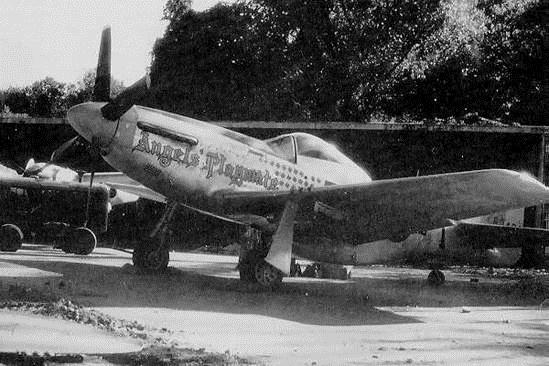
Carr threw himself into learning how to fly the Fw 190, undeterred by the challenge of reading German labels and controls. His dedication paid off—when the moment came, he took off without any issues, avoiding detection or trouble.
Getting out of German airspace was relatively easy, thanks to the plane’s German markings. But things got more dangerous once he entered Allied-controlled France. Almost right away, he came under fire. Focused on making it back safely, Carr flew low and fast to avoid being shot down—a risky move that ultimately worked. However, by the time he reached his base, his radio was no longer working.
In a bold and unusual move, Carr landed the plane on the runway without lowering the landing gear, causing it to skid to a stop. Some believe he did this on purpose, while others think he simply didn’t know how to properly land the German aircraft.
Bruce Carr sticks the landing
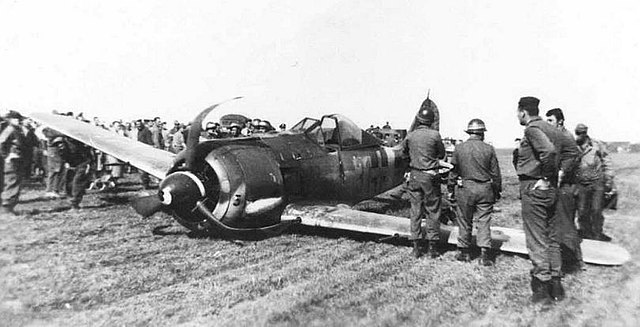
Bickel had just one question for the pilot: “Carr, where in the hell have you been, and what have you been doing now?”
Bruce Carr’s service in Vietnam and Korea
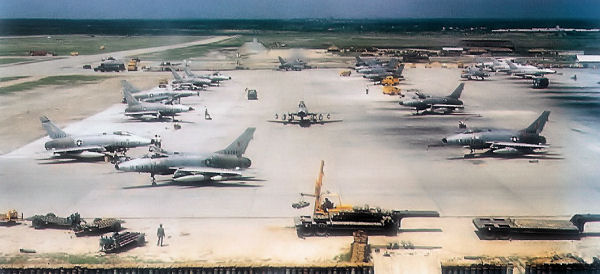
Following World War II, Bruce Carr continued his service with the US Army Air Forces as it became the US Air Force. Initially, he was tasked with piloting the Lockheed F-80 Shooting Star as a member of the Acrojets, America’s inaugural jet-powered aerobatic demonstration team. Their base of operations was at Williams Air Force Base, Arizona.
During the Korean War, now-Maj. Carr flew an impressive 57 missions with the 336th Fighter-Interceptor Squadron, before assuming command of the squadron from January 1955 to August ’56.
Carr flew 286 combat missions in Vietnam
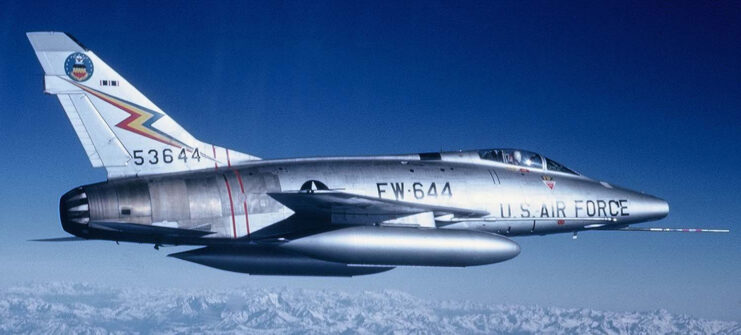
Subsequently promoted to colonel, Carr went on to serve in Vietnam, where he flew with the 31st Tactical Fighter Wing stationed at Tuy Hoa Air Base. Specializing in close air support missions, he accumulated a remarkable total of 286 combat missions flying the North American F-100 Super Sabre during his deployment.
More from us: The American Air Ace Shot Down By Friendly Fire During the Battle of the Bulge
In 1973, Carr retired from the Air Force. For his service in three wars, he received an impressive number of medals, including the Distinguished Service Cross, the Legion of Merit, the Silver Star, 31 Air Medals and four Distinguished Flying Crosses.
In 1998, the skilled aviator passed away from prostate cancer and was buried in Arlington National Cemetery.
